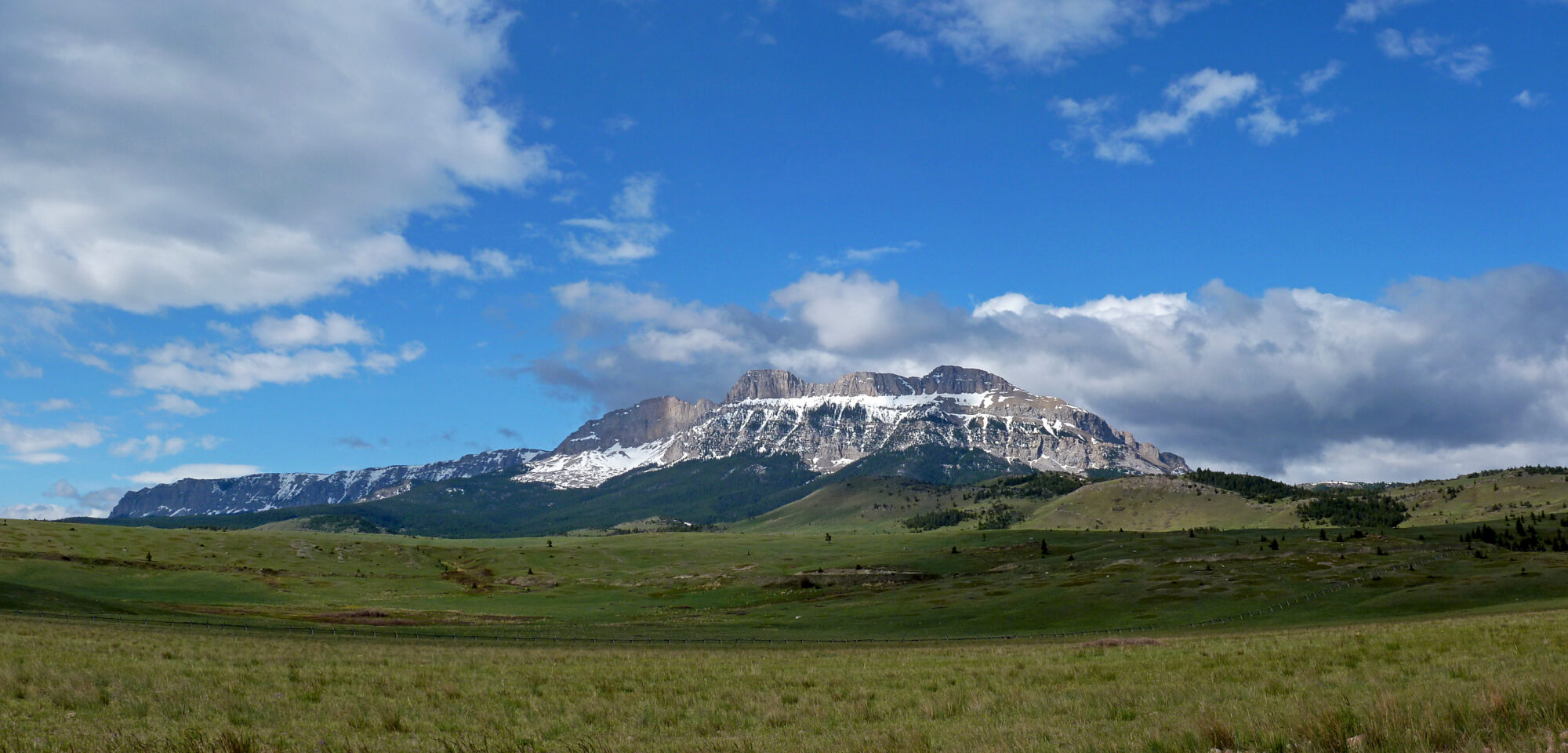The Rocky Mountain Front is a landscape like no other. To the Blackfeet, this rugged region was known as Miistakis, or “The Backbone of the World”. Early European-American trappers and later settlers called the mountains the “Sawtooths”. This is where the Big Sky of the prairie is torn by jagged peaks and miles-long reefs. No gentle foothills exist here, prairie meets the highlands abruptly. Where a landscape like no other exists, so to do a climate and ecosystem like no other.
The Old Trail Museum created the Rocky Mountain Front Interpretive Center (RMFIC) in 2023 in collaboration with local wildlife biologists, ecologists, meteorologists, geologists and hunters to showcase the Rocky Mountain Front’s unique landscape, climate and ecosystem. The RMFIC hosts exhibits created with these experts, interpreting the Rocky Mountain Front via their studies, research and experiences, highlighting local wildlife, ecology, natural histories and weather phenomenon of the Front.
The RMFIC displays a large 3D topographical map of the Rocky Mountain Front region, with photos and text highlighting several points of interest on the map, along with a 25-hike day hiking guide to entice tourists to further explore the Front, its reefs, canyons, peaks, rivers and waterfalls.
Local wildlife research is displayed in exhibits with local photography and taxidermy for several species, including grizzly bear, mountain goat, bighorn sheep, snow goose, trumpeter swan and elk. A 27 piece touch and feel exhibit of horns, antlers, furs, bones, skulls, paw prints, feathers and more allows visitors to learn more about the wide array of animal species present on the Front, while participating in a fun trivia game.
A meteorology exhibit explains the Front’s Chinook winds, the science behind the awe-inspiring cloud formations they create and how these winds play a role in world record-setting temperature swings set here in the region. An ecology exhibit explains the connections between organisms in the transition zone between prairie and mountain ecosystems and the central role of this transition zone’s lynchpin species, the limber pine, a species whose unusual characteristics have made it the species most fit to survive the often harsh conditions present on the Front.
A geology exhibit explains how the nearby mountains are actually made of older rock layers thrust on top of younger rock layers, while a glaciology exhibit explores the natural history of glaciation in the area, with prehistoric maps highlighting the ice sheets, glaciers and glacial lakes of the Rocky Mountain Front in the last Ice Age. The RMFIC also hosts two geo tours each year, exploring a different canyon along the Front each year to provide insight into the geology and glaciology behind the creation of the Front we see today.
Come and learn about these subjects and more at the Rocky Mountain Front Interpretive Center at the Old Trail Museum in Choteau, Montana.
